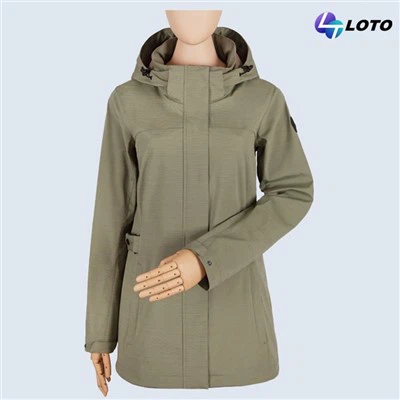In a world where the elements can be unpredictable, having outdoor clothing that can withstand both rain and wind is essential. The question arises: what makes a jacket both waterproof and windproof, and how can these properties be integrated into a single layer of fabric? This blog post delves into the fascinating science behind waterproof and windproof jackets, exploring how modern technology has made it possible to stay dry and comfortable, no matter the weather.
Understanding Waterproof and Windproof Technologies:
Waterproofing Explained:
Material Selection: The journey to waterproofing starts with selecting the right materials. Fabrics like Gore-Tex, eVent, and others have microporous structures that block water molecules while allowing vapor to escape.
Membrane Technology: These fabrics are often equipped with a membrane that contains billions of tiny pores per square inch. These pores are small enough to prevent water droplets from penetrating but large enough to let water vapor (sweat) out, ensuring breathability.
Windproofing Mechanism:
Tight Fabric Weave: Windproof jackets typically feature a tightly woven fabric that acts as a barrier against wind chill, preserving the wearer's body heat.
Additional Coatings: Some jackets also include a special coating or laminate on the fabric's surface, enhancing its ability to repel wind.
Combining Waterproof and Windproof in One Layer:
Layered Fabric Design:
The Role of Laminates: Manufacturers often laminate a waterproof membrane to a sturdy, wind-resistant outer fabric. This combination provides dual protection without the need for multiple layers.
Durable Water Repellent (DWR) Coating: The outer layer of the fabric is usually treated with DWR, which makes water bead up and roll off the surface, enhancing the fabric's waterproof capabilities.
Seam Sealing and Design Considerations:
Sealed Seams: For a jacket to be fully waterproof, all seams where the fabric is stitched together are sealed with waterproof tape.
Functional Design: Features like adjustable cuffs, hoods, and waterproof zippers are critical to ensure total protection.
The innovation in creating jackets that are both waterproof and windproof lies in the intricate balance of material science, fabric engineering, and thoughtful design. This blend of technology not only offers protection against the elements but also ensures comfort and durability. Whether you're an avid hiker or just looking for reliable rainwear, understanding these technologies can help you make an informed decision for your next outdoor adventure.










